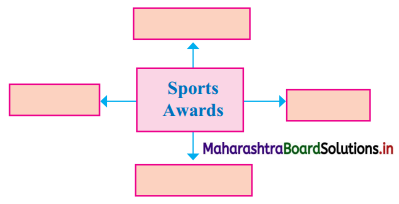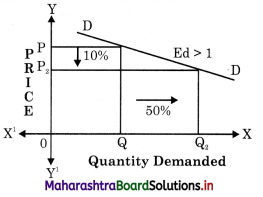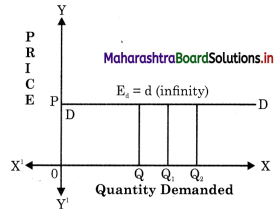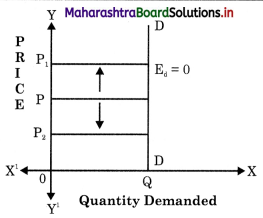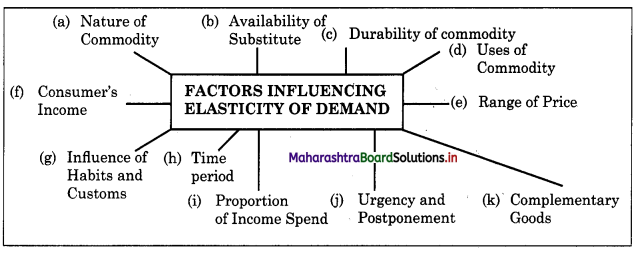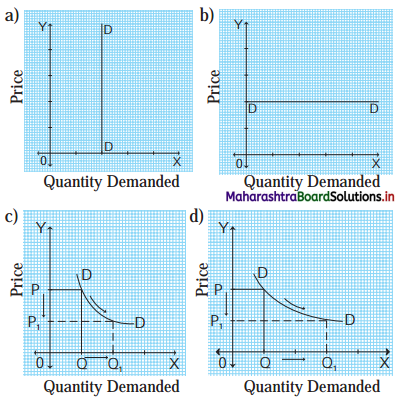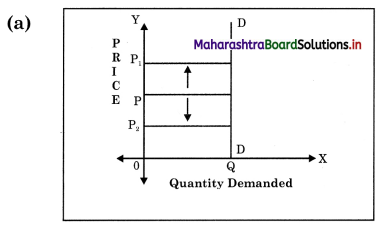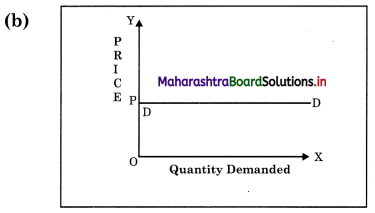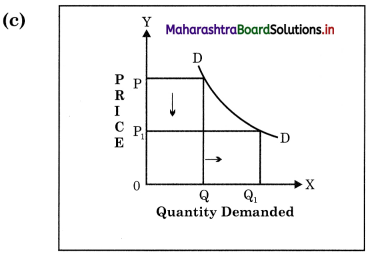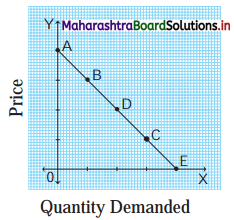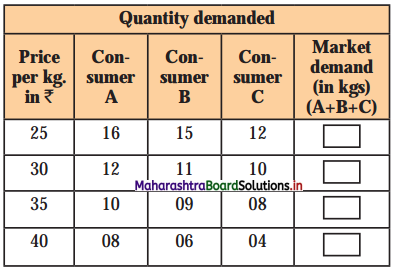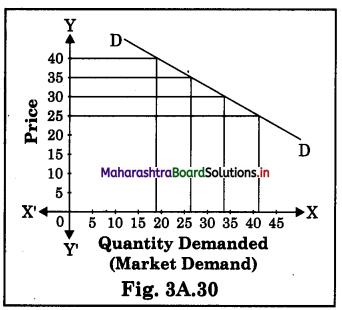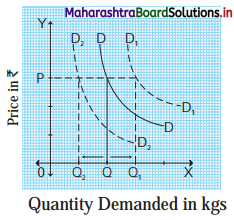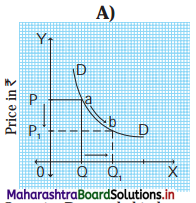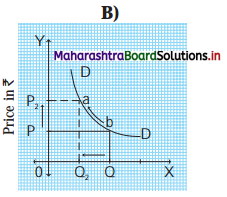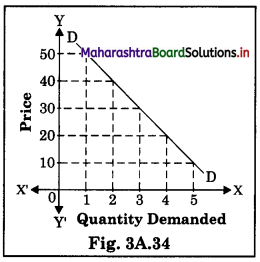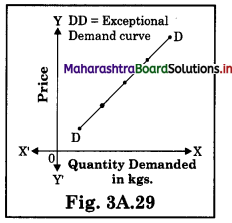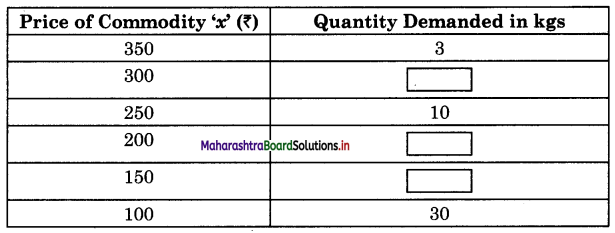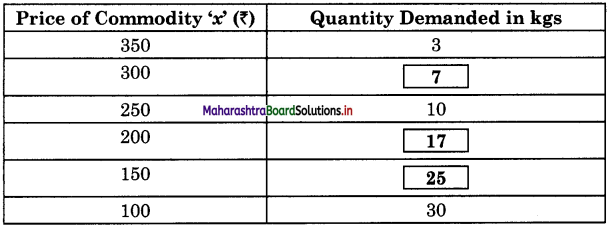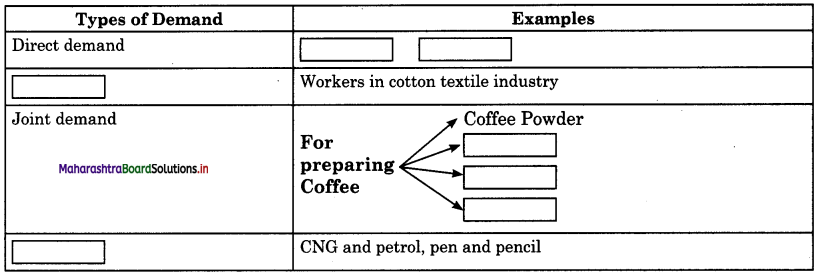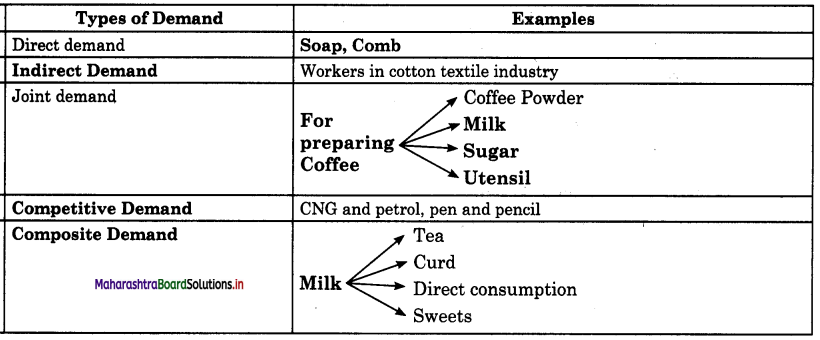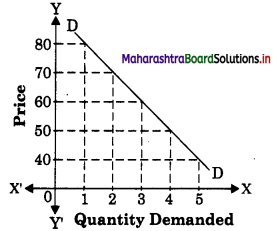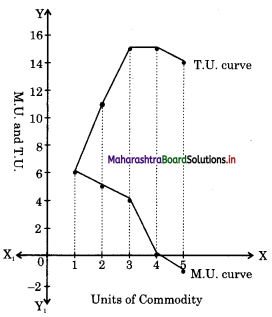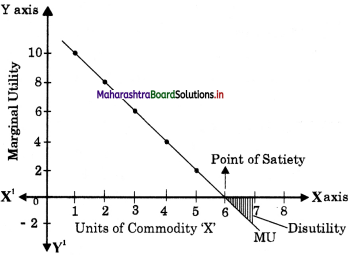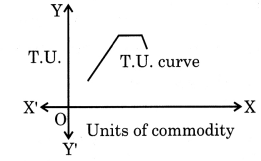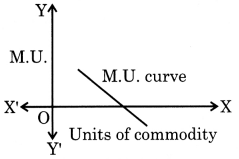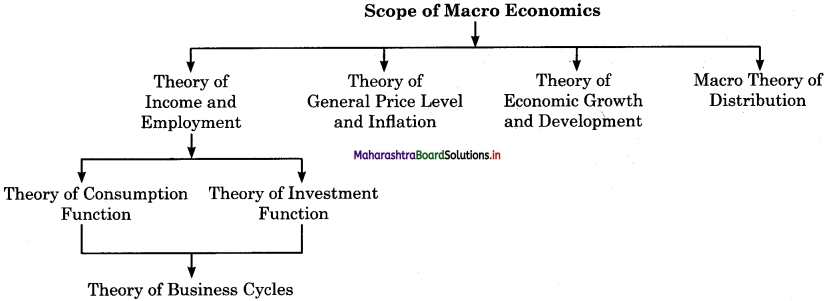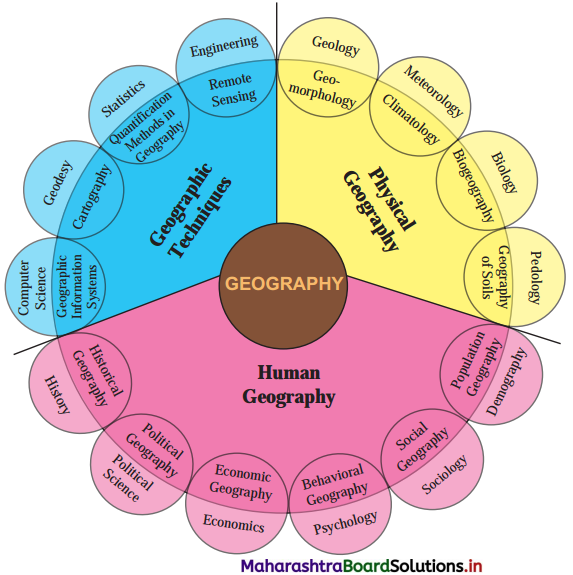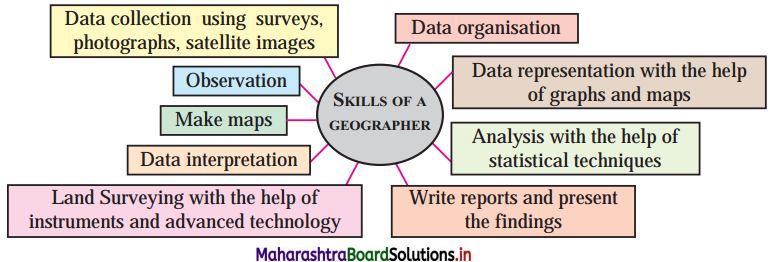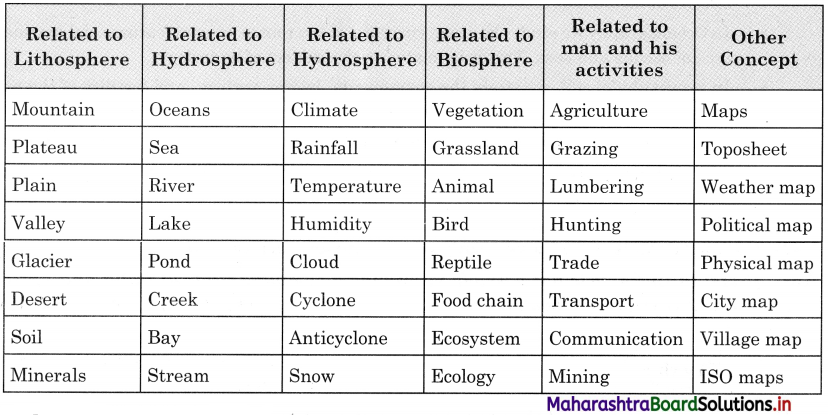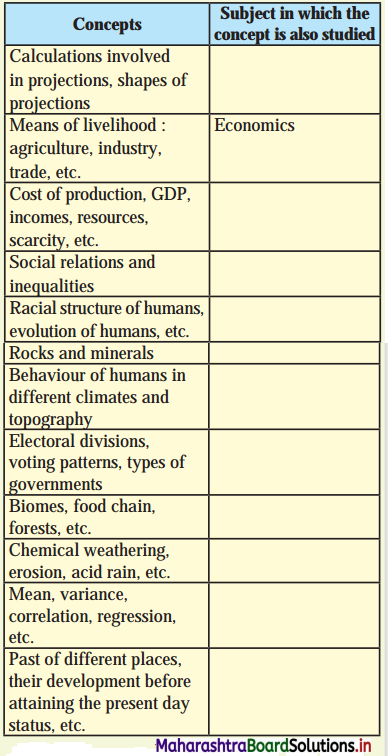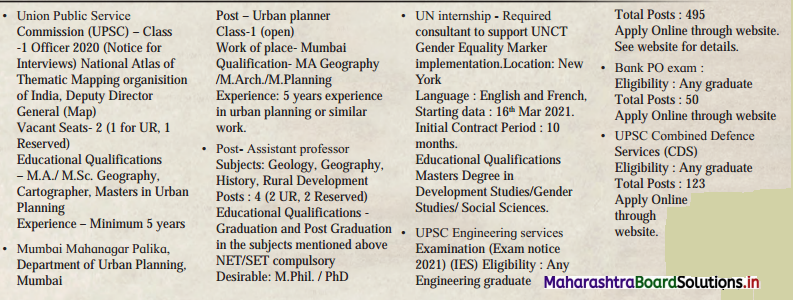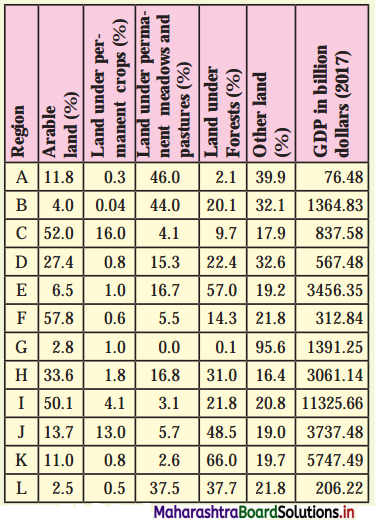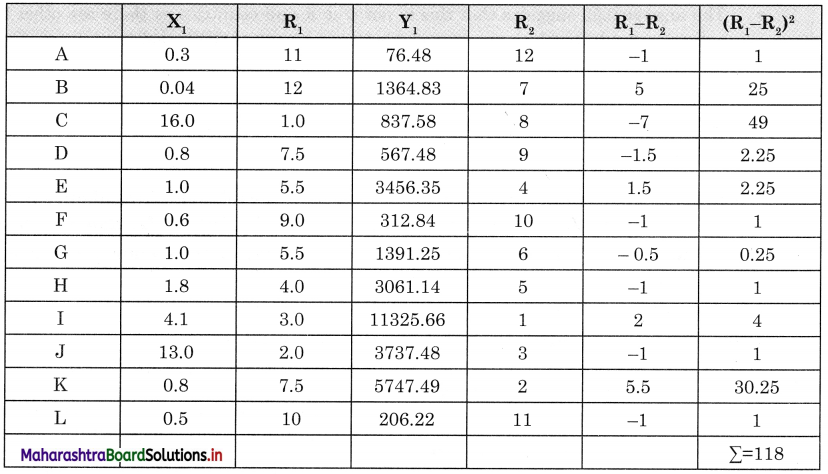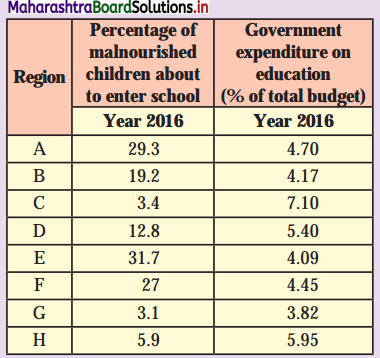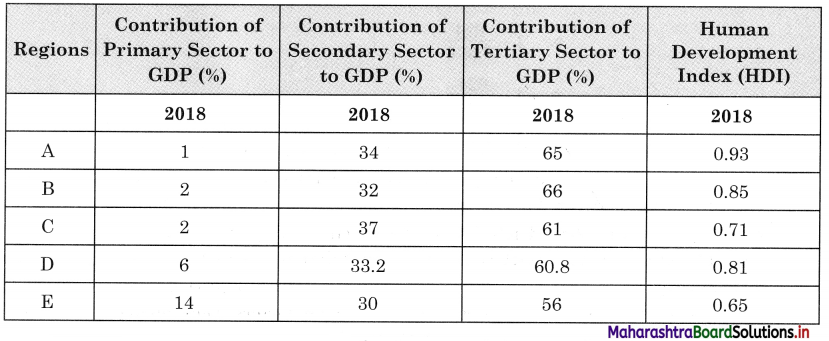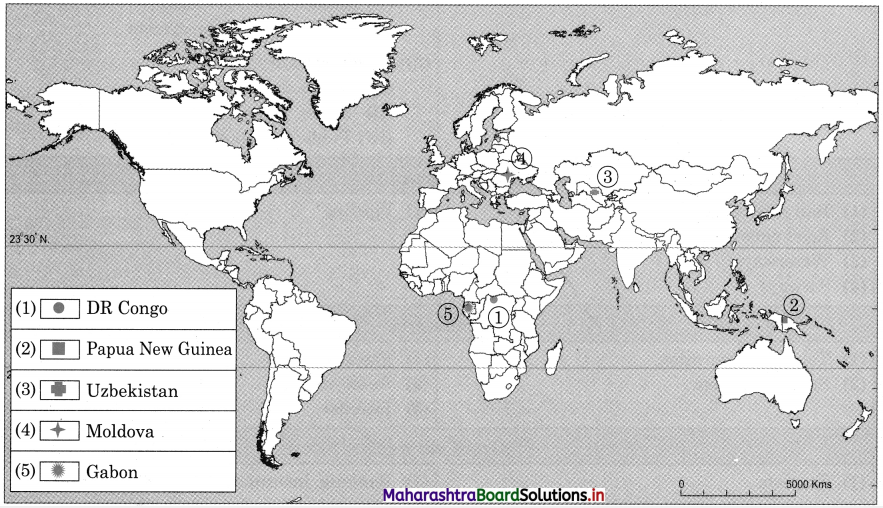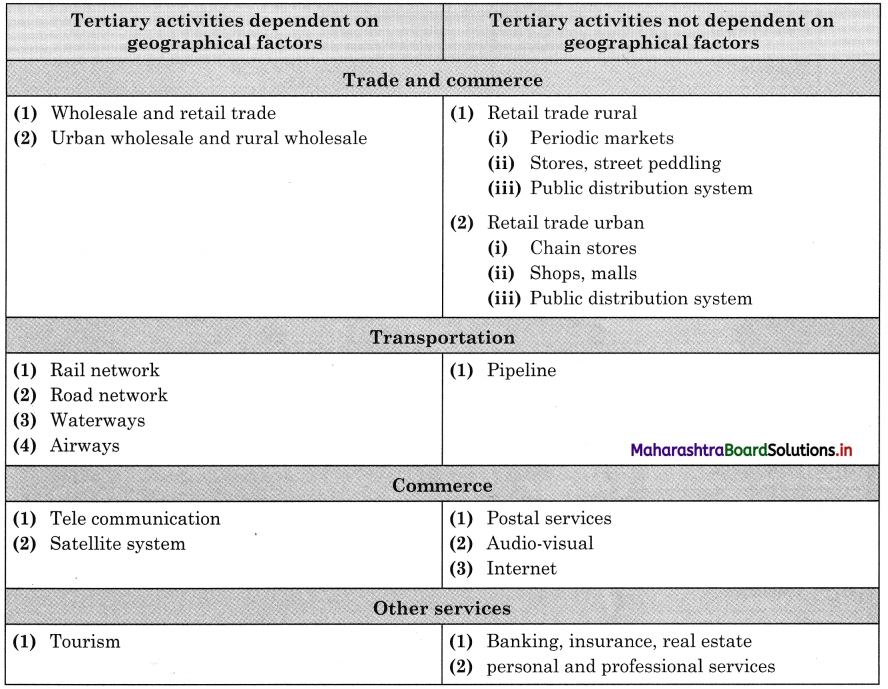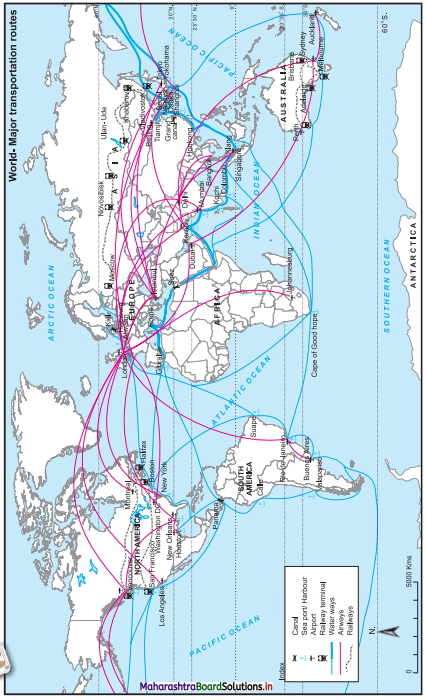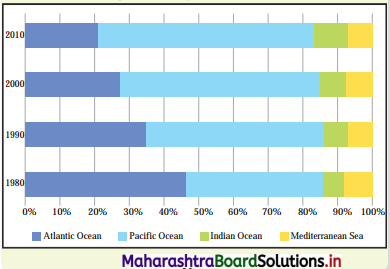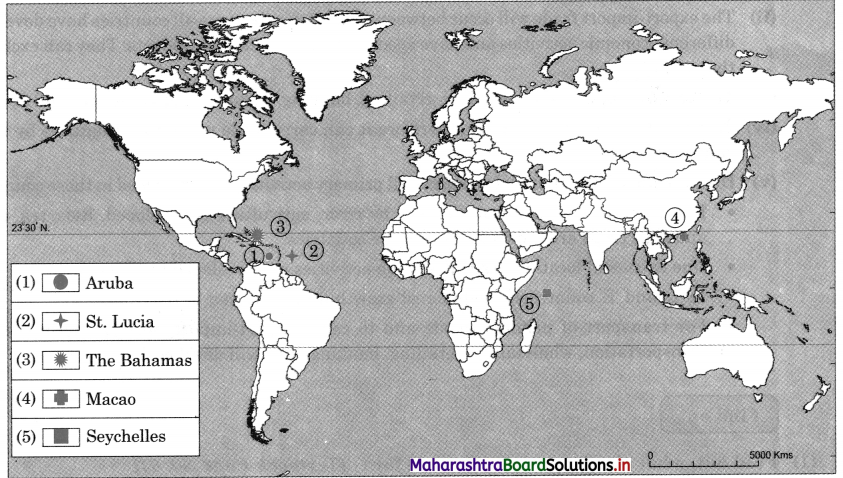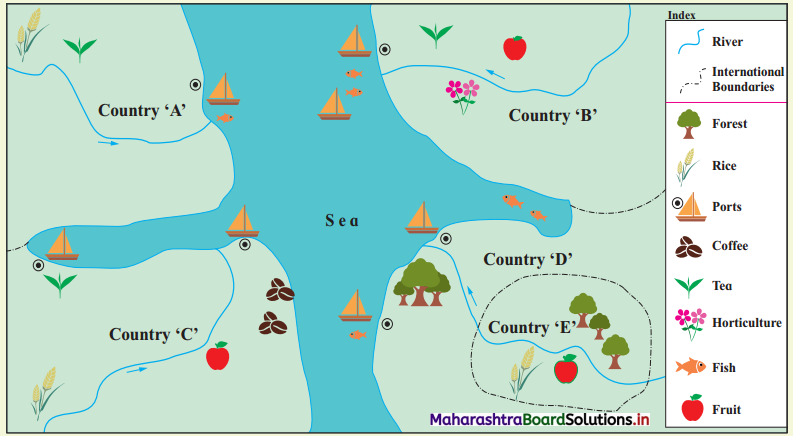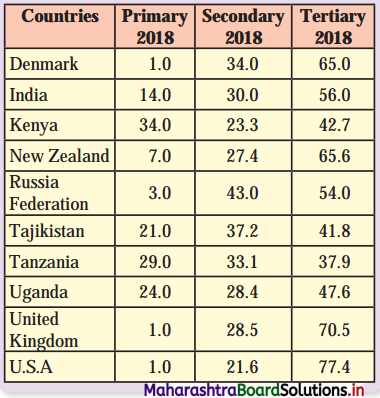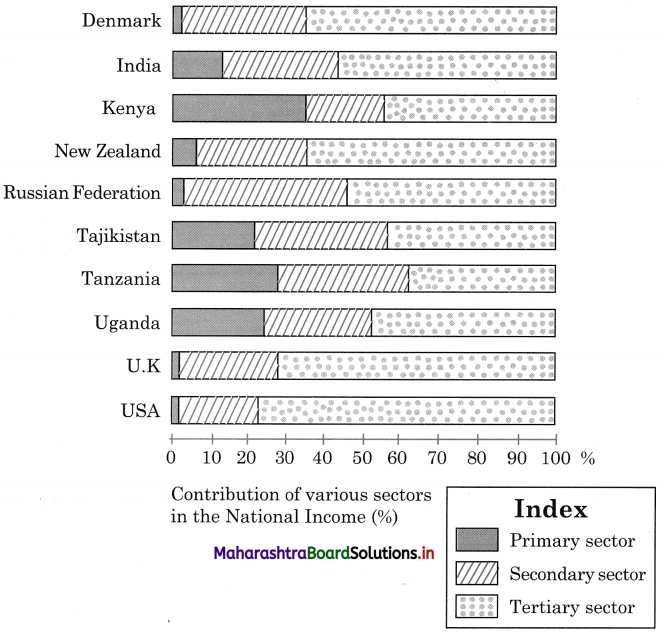Balbharti Maharashtra State Board Hindi Yuvakbharati 12th Digest Chapter 15 फीचर लेखन Notes, Textbook Exercise Important Questions and Answers.
Maharashtra State Board 12th Hindi Yuvakbharati Solutions Chapter 15 फीचर लेखन
12th Hindi Guide Chapter 15 फीचर लेखन Textbook Questions and Answers
कृति-स्वाध्याय एवं उत्तर
पाठ पर आधारित
प्रश्न 1.
फीचर लेखन की विशेषताएँ लिखिए।
उत्तर :
फीचर किसी विशेष घटना, व्यक्ति, जीव-जंतु, स्थान, प्रकृति-परिवेश से संबंधित व्यक्तिगत अनुभूतियों पर आधारित आलेख होता है। फीचर समाचारों को नया आयाम देता है, उनका परीक्षण करता है तथा उन पर नया प्रकाश डालता है। फीचर समाचारपत्र का प्राण तत्त्व होता है। पाठक की प्यास बुझाने, घटना की मनोरंजनात्मक अभिव्यक्ति की कला का नाम फीचर है। फीचर किसी गद्य गीत की तरह होता है जो बहुत लंबा, नीरस और गंभीर नहीं होना चाहिए। इससे पाठक बोर हो जाते हैं और ऐसे फीचर , कोई पढ़ना नहीं चाहता। फीचर किसी विषय का मनोरंजक शैली में विस्तृत विवेचन है।
![]()
अच्छा फीचर नवीनतम जानकारी से परिपूर्ण होता है। किसी घटना की सत्यता, तथ्यता फीचर का मुख्य तत्त्व है। फीचर लेखन में शब्द चयन अत्यंत महत्त्वपूर्ण है। लेखन की भाषा सहज, संप्रेषणीयता से परिपूर्ण होनी चाहिए। प्रसिद्ध व्यक्तियों के कथनों, उद्धरणों, लोकोक्तियों और मुहावरों का प्रयोग फीचर में है चार चाँद लगा देता है। फीचर लेखन में भावप्रधानता होनी चाहिए, क्योंकि नीरस फीचर कोई भी नहीं पढ़ना चाहता।
फीचर से संबंधित तथ्यों का आधार दिया जाना चाहिए। विश्वसनीयता के लिए फीचर ३ में तार्किकता आवश्यक है। तार्किकता के बिना फीचर अविश्वसनीय ३ बन जाता है। फीचर में विषय की नवीनता होना आवश्यक है, क्योंकि उसके अभाव में फीचर अपठनीय हो जाता है। फीचर में किसी व्यक्ति अथवा घटना विशेष का उदाहरण दिया गया हो तो उसकी संक्षिप्त जानकारी भी देनी चाहिए।
फीचर के विषयानुकूल चित्रों, कार्टूनों अथवा फोटो का उपयोग किया जाए तो फीचर अधिक प्रभावशाली बन जाता है। फीचर लेखन में राष्ट्रीय स्तर के तथा अन्य महत्त्वपूर्ण तथा समसामयिक विषयों का समावेश होना है चाहिए। फीचर पाठक की मानसिक योग्यता और शैक्षिक पृष्ठभूमि के अनुसार होना चाहिए।
प्रश्न 2.
फीचर लेखन के सोपानों को स्पष्ट कीजिए।
उत्तर :
फीचर लेखन की प्रक्रिया के निम्नलिखित सोपान हैं :
- प्रस्तावना : प्रस्तावना में फीचर के विषय का संक्षिप्त परिचय दिया जाता है। यह परिचय आकर्षक और विषयानुकूल होना चाहिए। परिचय पढ़कर पाठकों के मन में फीचर पढ़ने की जिज्ञासा जाग्रत होती है और पाठक अंत तक फीचर से जुड़ा रहता है।
- विवरण अथवा मुख्य कलेवर : फीचर में विवरण का महत्त्वपूर्ण स्थान है। फीचर में लेखक स्वयं के अनुभव, लोगों से प्राप्त जानकारी और विषय की क्रमबद्धता, रोचकता के साथ-साथ संतुलित तथा आकर्षक शब्दों में पिरोकर उसे पाठकों के सम्मुख रखता है जिससे फीचर पढ़ने वाले को ज्ञान और अनुभव से संपन्न कर दे।
- उपसंहार : यह अनुच्छेद संपूर्ण फीचर का सार अथवा निचोड़ होता है। इसमें फीचर लेखक फीचर का निष्कर्ष भी प्रस्तुत कर सकता है अथवा कुछ अनुत्तरित प्रश्न पाठकों के ऊपर भी छोड़ सकता है। उपसंहार ऐसा होना चाहिए जिससे पाठक को विषय से संबंधित ज्ञान भी मिल जाए और उसकी जिज्ञासा भी बनी रहे।
- शीर्षक : विषय का ओचित्यपूर्ण शीर्षक फीचर की आत्मा है। शीर्षक संक्षिप्तं रोचक और जिज्ञासावर्धक होना चाहिए। नवीनता, आकर्षकता और ज्ञानवृद्धि उत्तम शीर्षक के गुण हैं।
प्रश्न 3.
फीचर लेखन करते समय बरती जाने वाली सावधानियों पर प्रकाश डालिए।
उत्तर :
फीचर लेखन करते समय बरती जाने वाली सावधानियाँ :
- फीचर लेखन में आरोप-प्रत्यारोप करने से बचना चाहिए।
- फीचर लेखन में आलंकारिक और अति क्लिष्ट भाषा का है प्रयोग नहीं करना चाहिए।
- फीचर लेखन में अति नाटकीयता से बचना चाहिए।
- झूठा तथ्यात्मक आँकड़े, प्रसंग अथवा घटनाओं का उल्लेख है करना उचित नहीं।
- फीचर लेखन में अति कल्पनाओं और हवाई बातों के प्रयोग है से बचना चाहिए।
- फीचर लेखन में भावप्रधानता होनी चाहिए, क्योंकि नीरस फीचर कोई भी नहीं पढ़ना चाहता।
- फीचर बहुत लंबा, ऊबाऊ और गंभीर नहीं होना चाहिए। फीचर में विषय की नवीनता होना आवश्यक है।
- फीचर लेखन की भाषा सहज, संप्रेषणीयता से परिपूर्ण होनी चाहिए।
- फीचर से संबंधित तथ्यों का आधार दिया जाना चाहिए। विश्वसनीयता के लिए फीचर में तार्किकता आवश्यक है।
- फीचर लेखन पाठक की मानसिक योग्यता और शैक्षिक पृष्ठभूमि को ध्यान में रखकर किया जाना चाहिए।
- फीचर में किसी व्यक्ति अथवा घटना विशेष का उदाहरण दिया गया हो तो उसकी संक्षिप्त जानकारी भी देनी चाहिए।
- फीचर के विषयानुकूल चित्रों, कार्टूनों अथवा फोटो का उपयोग किया जाए तो फीचर अधिक प्रभावशाली बन है जाता है।
- फीचर लेखन में राष्ट्रीय स्तर के तथा अन्य महत्त्वपूर्ण तथा समसामयिक विषयों का समावेश होना चाहिए।
![]()
व्यावहारिक प्रयोग
प्रश्न 4.
भारत के अंतरिक्ष कार्यक्रम पर फीचर लेखन कीजिए।
उत्तर :
भारत का अंतरिक्ष कार्यक्रम डॉ विक्रम साराभाई की संकल्पना है। उन्हें भारतीय अंतरिक्ष कार्यक्रम का जनक कहा जाता है। वर्तमान में इस कार्यक्रम की कमान भारतीय अंतरिक्ष अनुसंधान संगठन (इसरो) के हाथों में है। इसरो की स्थापना 1969 में डॉ. विक्रम साराभाई की अध्यक्षता में की गई। इसका मुख्यालय बंगलौर में है। भारत ने अपने पहले अंतरिक्ष कार्यक्रम की शुरुआत बेहद सीमित संसाधनों के साथ की थी।
जब पहले उपग्रह को अंतरिक्ष में भेजा गया तब शायद ही किसी ने सोचा हो कि भारत का अंतरिक्ष यान किसी दिन मंगल ग्रह के लिए जा सकेगा। भारत के अंतरिक्ष कार्यक्रम से कई बड़े वैज्ञानिक जुड़े रहे हैं। पूर्व राष्ट्रपति डॉ. ए. पी. जे. अब्दुल कलाम भी भारत के अंतरिक्ष कार्यक्रम में योगदान दे चुके हैं।
स्थापना के बाद से ही भारतीय अंतरिक्ष कार्यक्रम अच्छी तरह से ऑर्केस्ट्रेटेड किया गया है और इसमें संचार और रिमोट सेंसिंग के लिए उपग्रह, अंतरिक्ष परिवहन प्रणाली और अनुप्रयोग कार्यक्रम जैसे तीन अलग-अलग तत्त्व थे। प्राकृतिक संसाधनों और आपदा प्रबंधन सहायता की निगरानी और प्रबंधन के लिए दूरसंचार, टेलिविजन प्रसारण और मौसम संबंधी सेवाओं और रिमोट सेंसिंग सैटेलाइट के लिए दो प्रमुख परिपालन प्रणालियों को भारतीय राष्ट्रीय उपग्रह स्थापित किया गया है।
1960 और 1970 के दशक के दौरान भारत ने भू राजनीतिक और आर्थिक विचारों के कारण अपना स्वयं का लॉन्च वाहन कार्यक्रम प्रारंभ किया। देश ने एक साउंडिंग रॉकेट प्रोग्राम विकसित किया और 1980 के दशक तक सैटेलाइट लॉन्च व्हीकल – 3 और अधिक उन्नत, संवर्धित सैटेलाइट लॉन्च व्हीकल (ए एस एल वी) को परिचालन सहायक बुनियादी ढाँचे के साथ पूरा किया।
सबसे पहले धुंबा को रॉकेट लॉन्चिग सेंटर के तौर पर चुना गया था। धरती की भू चुंबकीय भूमध्य रेखा धुंबा से गुजरती है। भारत ने पहला रॉकेट 21 नवंबर 1963 को लॉन्च किया था यानी मंगल यान से करीब 50 साल पहले। ये एक नाइक-अपाचे रॉकेट था। 1975 में भारत ने अपना पहला उपग्रह आर्यभट्ट लॉन्च किया और इस तरह अंतरिक्ष युग में प्रवेश किया। इसका वजन सिर्फ 360 किलोग्राम था और इसका नाम प्राचीन भारत के प्रसिद्ध खगोलविद आर्यभट्ट के नाम पर रखा गया था।
![]()
भास्कर – 1 भारत का पहला रिमोट सेंसिंग सैटेलाइट था, इस उपग्रह का कैमरा जो तस्वीरें भेजता था, उन्हें वन, पानी और सागरों के अध्ययन में इस्तेमाल किया जाता था। चंद्रयान का भारत के अंतरिक्ष कार्यक्रम में महत्त्वपूर्ण स्थान है। चंद्रयान ने चंद्रमा की सतह पर पानी की खोज की थी।
इसरो ने प्रक्षेपण यान प्रौद्योगिकी की उन्नति के लिए अपनी ऊर्जा को आगे बढ़ाया, जिसके परिणामस्वरूप पी एस एल वी और जी एस एल वी प्रौद्योगिकियों का निर्माण हुआ। पिछले साढ़े चार दशकों में भारत का अंतरिक्ष कार्यक्रम ने एक सुसंगठित, आत्मनिर्भर कार्यक्रम के माध्यम से प्रभावशाली प्रगति की है।
प्रश्न 5.
लता मंगेशकर पर फीचर लेखन कीजिए।
उत्तर :
भारतरत्न लता मंगेशकर भारत की अप्रतिम गायिका हैं। उनकी मधुर आवाज की पूरी दुनिया दीवानी है। पिछले छह-सात दशकों से भारतीय सिनेमा को अपनी आवाज के जादू से सराबोर करने वाली लता का जन्म 28 सितंबर, 1929 को इंदौर के मराठी परिवार में पंडित दीनदयाल के घर में हुआ। लता के पिता रंगमंच के कलाकार और गायक भी थे। अतः संगीत लता को विरासत में मिला। लता के जन्म के कुछ दिन बाद ही इनका परिवार महाराष्ट्र चला गया।
लता मंगेशकर ने अपनी संगीत यात्रा का प्रारंभ मराठी फिल्मों से किया। इन्होंने ‘हिंदुस्तान क्लासिकल म्यूजिक’ के उस्ताद अमानत अली खान से क्लासिकल संगीत सीखना शुरु किया। भारत बँटवारे के बाद उस्ताद अमानत अली खान के पाकिस्तान चले जाने के बाद लता ने बड़े गुलाम अली खान, पंडित तुलसीदास शर्मा तथा उस्ताद अमानत खान देवसल्ले से संगीत सीखा।
गुलाम हैदर ने 1948 में लता को ‘मजबूर’ फिल्म में पहला ब्रेक दिया। तब से लेकर 1989 तक लता मंगेशकर ने 30000 से भी अधिक गाने गाए हैं, जो अपने आप में एक रिकॉर्ड है। इस दौर में हिंदी फिल्म इंडस्ट्री का शायद ही कोई ऐसा फिल्म निर्देशक और संगीत निर्देशक होगा, जिसके साथ लता जी ने काम न किया हो। लता मंगेशकर अत्यंत शांत स्वभाव और प्रतिभा की धनी हैं।
उन्होंने रागों पर आधारित अनेक गाने गाए, तो दूसरी ओर ‘अल्लाह. तेरो नाम’ और ‘प्रभु तेरो नाम’ जैसे भजन भी गाए, वहीं 1963 में पंडित जवाहरलाल नेहरू की उपस्थिति में देश का सबसे जीवंत गीत ‘ऐ मेरे वतन के लोगों’ गाया। इस गाने को सुनते समय नेहरू जी की आँखों से आँसू बह निकले थे।
लता मंगेशकर भारतीय संगीत में महत्त्वपूर्ण योगदान देने के लिए पद्मभूषण, पद्मविभूषण, दादा साहेब फाल्के अवॉर्ड, महाराष्ट्र भूषण अवॉर्ड, भारतरत्न, 3 बार राष्ट्रीय फिल्म अवॉर्ड, बंगाल फिल्म पत्रकार संगठन अवॉर्ड, फिल्म फेअर लाइफटाइम अचीवमंट अवॉर्ड सहित अनेक अवॉर्ड जीत चुकी हैं। आज पूरी संगीत दुनिया उनके आगे नतमस्तक है।
फीचर के प्रकार
- समाचार फीचर
- खोजपरक फीचर
- मानवीय रुचिपरक फीचर
- सांस्कृतिक कार्यक्रमों से संबंधित फीचर
- व्याख्यात्मक फीचर
- ऐतिहासिक फीचर
- जन रुचि के विषयों पर आधारित फीचर
- विज्ञान फीचर
- खेल-कूद फीचर
- फोटो फीचर
- पर्वोत्सवी फीचर
- इलेक्ट्रॉनिक माध्यमों पर आधारित फीचर
- विशेष घटनाओं पर आधारित फीचर
- व्यक्तिगत फीचर
- रेडियो फीचर
![]()
फीचर लेखन Summary in Hindi
फीचर लेखन का परिचय
फीचर लेखन लेखक का नाम :
डॉ. बीना शर्मा। (जन्म 20 अक्तूबर 1959.)
फीचर लेखन प्रमुख कृतियाँ :
‘हिंदी शिक्षण – अंतर्राष्ट्रीय परिप्रेक्ष्य’, ‘भारतीय सांस्कृतिक प्रतीक’ आदि।
फीचर लेखन विशेषता :
डॉ. बीना का लेखन शिक्षा क्षेत्र और भारतीय संस्कृति से प्रेरित है। स्त्री विमर्श और समसामयिक विषयों पर आपका विशेष लेखन। आपका साहित्य भारतीय संस्कारों और जीवन मूल्यों के प्रति आग्रही है।
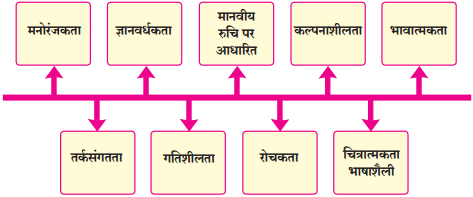
फीचर लेखन विषय प्रवेश :
आज के दौर में फीचर लेखन पत्रकारिता क्षेत्र का आधार स्तंभ बन गया है। फीचर का मुख्य कार्य पाठक के सम्मुख किसी विषय का सजीव वर्णन करना होता है। प्रस्तुत पाठ में लेखिका फीचर लेखन का स्वरूप, उसकी विशेषताएँ, प्रकार आदि पर प्रकाश डालते हुए इस तथ्य को उद्भासित कर रही है कि फीचर लेखन जहाँ एक ओर समाज के दर्पण के रूप में कार्य कर सकता है, वहीं यह आजीविका का स्रोत भी बन सकता है।
फीचर लेखन पाठ का सार
स्नेहा एक पत्रकार है। आज वह और उसका पूरा परिवार आनंद और गर्व की भावना से भरा है। पत्रकारिता के क्षेत्र में फीचर लेखन के लिए दिए जाने वाले ‘सर्वश्रेष्ठ फीचर लेखन’ के लिए स्नेहा को राष्ट्रीय पुरस्कार से सम्मानित किया गया है। आज उसके परिवार द्वारा एक पार्टी का आयोजन किया गया है। स्नेहा के पति, उसके सास-ससुर, पुत्री प्रिया और पुत्र नैतिक उसे बधाई दे रहे हैं। स्नेहा की आँखों में खुशी के आँसू हैं।
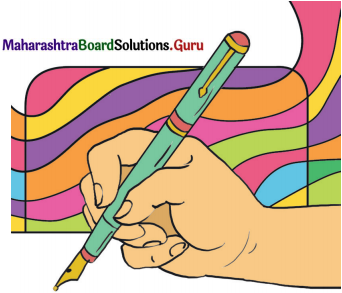
स्नेहा अतीत में खो जाती है। बी. ए. कर लेने के बाद पिता द्वारा भविष्य के बारे में पूछने पर वह पत्रकारिता का कोर्स करने है की इच्छा प्रकट करती है, जिसे माता द्वारा भी समर्थन मिलता है। स्नेहा पत्रकारिता का कोर्स ज्वाइन कर लेती है। पत्रकारिता की कक्षा का प्रथम दिवस – पहले लेक्चर में प्रोफेसर ने पत्रकारिता पाठ्यक्रम का पहला पेपर पढ़ाना शुरु किया। विषय था – फीचर लेखन। उन्होंने फीचर लेखन की विभिन्न परिभाषाओं को समझाते हुए कहा – फीचर लेखन के क्षेत्र में चर्चित जेम्स डेविस कहते हैं – ‘फीचर समाचारों को नया आयाम देता है, उनका परीक्षण करता है तथा उन पर नया प्रकाश डालता है।’
![]()
स्नेहा की फीचर लेखन में विशेष रुचि थी। उसके द्वारा प्रसिद्ध फीचर लेखक पी. डी. टंडन का उल्लेख करने पर प्रोफेसर ने बताया कि पी. डी. टंडन के अनुसार ‘फीचर किसी गद्य गीत की तरह होता है, जो बहुत लंबा, नीरस और गंभीर नहीं होना चाहिए। इससे पाठक बोर हो जाते हैं और ऐसे फीचर कोई पढ़ना नहीं चाहता। फीचर किसी विषय का मनोरंजक शैली में विस्तृत विवेचन है।’
इन परिभाषाओं के द्वारा स्नेहा अच्छी तरह समझ गई कि फीचर समाचारपत्र का प्राण तत्त्व होता है। पाठक की प्यास बुझाने, घटना की मनोरंजनात्मक अभिव्यक्ति की कला का नाम फीचर है। पत्रकारिता कोर्स के बीतते दिन-महीने, फीचर लेखन के संबंध में सुने हुए लेक्चर्स, प्रोफेसरों के साथ की गई चर्चाएँ, अध्ययन, परीक्षा, फीचर लेखन का प्रारंभ फीचर लेखन और आज का दिन। फीचर लेखन की सिद्धहस्त लेखिका बनना ही स्नेहा का एकमात्र सपना था।
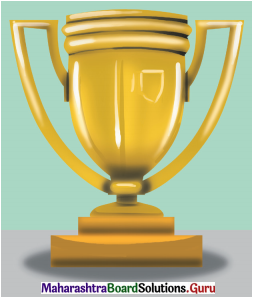
स्नेहा को याद आ रहा है वह दिन जब उसे पत्रकारिता कोर्स में फीचर लेखन पर व्याख्यान देने के लिए बुलाया गया था। आज उसे अपना परिश्रम सार्थक होता नजर आ रहा था। रोचक प्रसंगों के साथ स्नेहा फीचर लेखन की विशेषताएँ बताने लगी – अच्छा फीचर नवीनतम जानकारी से परिपूर्ण होता है।
किसी घटना की सत्यता, तथ्यता फीचर का मुख्य तत्त्व है। फीचर लेखन में राष्ट्रीय स्तर के तथा अन्य महत्त्वपूर्ण विषयों का समावेश होना चाहिए क्योंकि समाचारपत्र दूर-दूर तक जाते हैं। साथ ही फीचर का विषय समसामयिक होना चाहिए।
फीचर लेखन में भावप्रधानता होनी चाहिए, क्योंकि नीरस फीचर कोई भी नहीं पढ़ना चाहता। फीचर से संबंधित तथ्यों का आधार दिया जाना चाहिए। विश्वसनीयता के लिए फीचर में तार्किकता आवश्यक है। तार्किकता के बिना फीचर अविश्वसनीय बन जाता है। फीचर में विषय की नवीनता होना आवश्यक है क्योंकि उसके अभाव में फीचर अपठनीय हो जाता है। फीचर में किसी व्यक्ति अथवा घटना विशेष का उदाहरण दिया गया हो तो उसकी संक्षिप्त जानकारी भी देनी चाहिए।
फीचर लेखन करते समय लेखक को पाठक की मानसिक योग्यता और शैक्षिक पृष्ठभूमि को ध्यान में रखना चाहिए। प्रसिद्ध व्यक्तियों के कथनों, उद्धरणों, लोकोक्तियों और मुहावरों का प्रयोग फीचर में चार चाँद लगा देता है। फीचर लेखक को निष्पक्ष रूप से अपना मत व्यक्त करना चाहिए तभी पाठक उसके विचारों से सहमत हो सकेगा। फीचर लेखन में शब्द चयन अत्यंत महत्त्वपूर्ण है। लेखन की भाषा सहज, संप्रेषणीयता से परिपूर्ण होनी चाहिए। फीचर के विषयानुकूल चित्रों, कार्टूनों अथवा फोटो का उपयोग किया जाए तो फीचर अधिक प्रभावशाली बन जाता है।
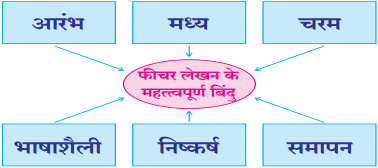
एक विद्यार्थी के पूछने पर स्नेहा बताती है कि फीचर किसी विशेष घटना, व्यक्ति, जीव-जंतु, तीज-त्योहार, दिन, स्थान, प्रकृतिपरिवेश से संबंधित व्यक्तिगत अनुभूतियों पर आधारित आलेख होता है। इस आलेख को कल्पनाशीलता, सृजनात्मक कौशल के साथ मनोरंजक और आकर्षक शैली में प्रस्तुत किया जाता है। फीचर अनेक प्रकार के हो सकते हैं।
![]()
फीचर लेखन मुख्य रूप से –
- व्यक्तिपरक फीचर
- सूचनात्मक फीचर
- विवरणात्मक फीचर
- विश्लेषणात्मक फीचर
- साक्षात्कार
- विज्ञापन फीचर
स्नेहा ने आगे फीचर लेखन करते समय बरती जाने वाली सावधानियों के बारे में बताया :
- फीचर लेखन में आरोप-प्रत्यारोप करने से बचना चाहिए।
- फीचर लेखन में क्लिष्ट और आलंकारिक भाषा का प्रयोग नहीं करना चाहिए।
- फीचर लेखन में झूठे तथ्यात्मक आँकड़े, प्रसंग अथवा घटनाओं का उल्लेख करना उचित नहीं है।
- फीचर अति नाटकीयता से परिपूर्ण नहीं होना चाहिए।
- फीचर लेखन में लेखक को अति कल्पनाओं और हवाई बातं के प्रयोग से बचना चाहिए।
इन सभी सावधानियों को ध्यान रखेंगे तो फीचर लेखन अधिकाधिक विश्वसनीय और प्रभावी बन सकता है।
फीचर लेखन की प्रक्रिया पर प्रकाश डालते हुए स्नेहा ने बताया कि फीचर लेखन के मुख्य तीन अंग हैं :
- विषय का चयन : फीचर लेखन में विषय का चयन करते समय इस बात का ध्यान रखना चाहिए कि विषय रोचक, ज्ञानवर्धक और उत्प्रेरित करने वाला हो। अतः फीचर का विषय समयानुकूल और समसामयिक होना चाहिए। विषय जिज्ञासा उत्पन्न करने वाला हो।
- सामग्री का संकलन : फीचर लेखन में विषय संबंधी सामग्री का संकलन करना महत्त्वपूर्ण अंग है। उचित जानकारी और अनुभव के अभाव में लिखा गया फीचर नीरस सिद्ध हो सकता है। विषय से संबंधित उपलब्ध पुस्तकों, पत्र-पत्रिकाओं से सामग्री जुटाने के अलावा बहुत-सी सामग्री लोगों से मिलकर, कई स्थानों पर जाकर जुटानी पड़ती है।
- फीचर योजना : फीचर लिखने से पहले फीचर का एक योजनाबद्ध ढाँचा बनाना चाहिए।
एक अन्य विद्यार्थी की जिज्ञासा शांत करते हुए स्नेहा ने बताया – निम्न चार सोपानों अथवा चरणों के आधार पर फीचर लिखा जाता है :
- प्रस्तावना : प्रस्तावना में फीचर के विषय का संक्षिप्त परिचय होता है। यह परिचय आकर्षक और विषयानुकूल होना चाहिए। इससे पाठकों के मन में फीचर पढ़ने की जिज्ञासा जाग्रत होती है और पाठक अंत तक फीचर से जुड़ा रहता है।
- विवरण अथवा मुख्य कलेवर : फीचर में विवरण का महत्त्वपूर्ण स्थान है। फीचर में लेखक स्वयं के अनुभव, लोगों से प्राप्त जानकारी और विषय की क्रमबद्धता, रोचकता के साथसाथ संतुलित तथा आकर्षक शब्दों में पिरोकर उसे पाठकों के सम्मुख रखता है जिससे फीचर पढ़ने वाले को ज्ञान और अनुभव से संपन्न कर दे।
- उपसंहार : यह अनुच्छेद संपूर्ण फीचर का सार अथवा निचोड़ होता है। इसमें फीचर लेखक फीचर का निष्कर्ष भी प्रस्तुत कर सकता है अथवा कुछ अनुत्तरित प्रश्न पाठकों के ऊपर भी छोड़ सकता है। उपसंहार ऐसा होना चाहिए जिससे पाठक को विषय से संबंधित ज्ञान भी मिल जाए और उसकी जिज्ञासा भी बनी रहे।
- शीर्षक : विषय का औचित्यपूर्ण शीर्षक फीचर की आत्मा है। शीर्षक संक्षिप्त, रोचक और जिज्ञासावर्धक होना चाहिए। नवीनता, आकर्षकता और ज्ञानवृद्धि उत्तम शीर्षक के गुण हैं।
![]()
फीचर लेखन शब्दार्थ
| आनंदित | प्रसन्न। |
| सम्मानित | आदर किया हुआ। |
| उपलक्ष्य | उद्देश्य। |
| छलछलाना | आँसू भर आना। |
| समर्थन | किसी मत की पुष्टि। |
| पत्रकारिता | पत्रकार का काम। |
| चर्चित | जिसकी चर्चा की जाती हो। |
| आयाम | विस्तार। |
| परीक्षण | परीक्षा। |
| विश्लेषण | अलग करना। |
| परिभाषित | जिसकी परिभाषा की गई हो। |
| नीरस |
जिसमें रस न हो। |
| मनोरंजक | मन को प्रसन्न करने वाला। |
| विस्तृत | विस्तार वाला। |
| विवेचन | व्याख्या। |
| प्राण तत्त्व | आत्मा। |
| प्रविष्ट | अंदर आना। |
| आँखें फटी-की-फटी रह जाना | बहुत अधिक आश्चर्य होना। |
| विख्यात | प्रसिद्ध। |
| बरबस | अचानक। |
| शीर्ष | सर्वोच्च। |
| सिद्धहस्त | जिसका हाथ कोई काम करने में मँजा हो। |
| व्याख्यान | भाषण। |
| सार्थक | सफल। |
| रोचक | रुचि उत्पन्न करने वाला। |
| परिपूर्ण | संपूर्ण। |
| तथ्यता | यथार्थता। |
| समावेश | शामिल होना। |
| समसामयिक | समकालीन, एक ही समय में होने वाला। |
| विश्वसनीयता | विश्वास के योग्य होने का गुण। |
| तार्किकता | तर्क करने की योग्यता। |
| अविश्वसनीय | विश्वास न करने योग्य। |
| अपठनीय | जो पढ़ने योग्य न हो। |
| उद्धरण | किसी लेख के अंश को दूसरे लेख में प्रयोग करना। |
| लोकोक्ति | लोगों द्वारा कही गई उक्ति अर्थात कथन। |
| निष्पक्ष | जो किसी तरह का पक्षपात न करता हो। |
| विषयानुकूल | विषय के अनुकूल। |
| आश्वस्त | जिसे आश्वासन दिया गया हो। |
| परिवेश | वातावरण। |
| अनुभूति | अनुभव। |
| आलेख | लेख। |
| व्यक्तिपरक | व्यक्तिगत। |
| सूचनात्मक | सूचना संबंधी। |
| विवरणात्मक | सविस्तार वर्णन वाला। |
| साक्षात्कार | भेंट। |
| सटीक | उचित। |
| तर्कसंगत | जो तर्क पर आधारित हो। |
| क्लिष्ट | कठिनाई से समझ में आने वाला। |
| चयन |
चुनाव। |
| ज्ञानवर्धक | ज्ञान बढ़ाने वाला। |
| उत्प्रेरित | उत्साहित। |
| समयानुकूल | समय के अनुकूल। |
| संकलन | संग्रह। |
| मंतव्य | विचार। |
| सोपान | सीढ़ी। |
| कलेवर | ऊपरी ढाँचा। |
| क्रमबद्धता | क्रम के अनुसार। |
| अनुच्छेद | पैराग्राफ। |
| अनुत्तरित | जिसका उत्तर न दिया गया हो। |
| औचित्यपूर्ण | उपयुक्त। |
| जिज्ञासावर्धक | जानने की इच्छा बढ़ाने वाला। |
| शंका | प्रश्न। |
| समाधान | किसी प्रश्न का संतोषजनक उत्तर। |
| विख्यात | प्रसिद्ध। |
| योगदान | सहायता देना। |
| कुतूहल | अचरज। |
| कृतज्ञता | उपकार मानना। |
